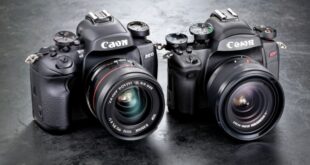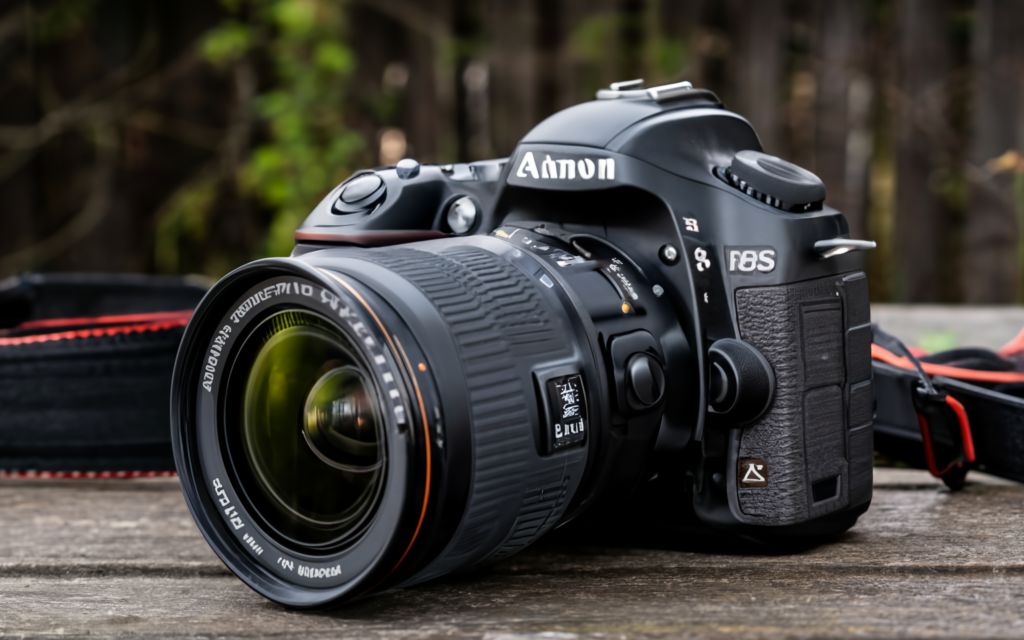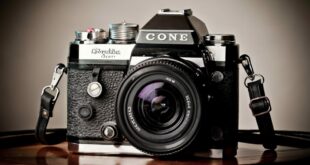Introduction
Hello, photography enthusiasts! Today, we dive deep into the world of DSLR camera portrait settings, where every click is an opportunity to freeze captivating moments forever. Whether you’re a novice or an experienced photographer, understanding the intricacies of portrait settings can vastly enhance your ability to capture stunning, professional-grade portraits that leave a lasting impact. In this article, we will explore seven essential DSLR camera portrait settings that will empower you to create masterpieces and elevate your photography to new heights.
The Importance of DSLR Camera Portrait Settings
📸 Obtaining optimal portrait settings on your DSLR camera is crucial for creating breathtaking photographs that highlight the beauty of your subjects. These settings enable you to manipulate various aspects of your camera to achieve the desired effect, such as controlling the depth of field, exposure, and focus. By understanding and utilizing these settings effectively, you can capture portraits that truly stand out and evoke emotions.
1. Aperture: Controlling Depth of Field
🔍 One of the most critical settings in portrait photography is aperture. Adjusting the aperture allows you to control the depth of field, determining how much of the background is in focus. A wide aperture (small f-stop number) creates a shallow depth of field, resulting in a blurred background that directs the viewer’s attention to the subject. On the other hand, a narrow aperture (higher f-stop number) produces a larger depth of field, keeping both the subject and background sharp.
Advantages of Wide Aperture:
– Creates a beautiful, dreamy bokeh effect, isolating the subject.
– Adds a sense of depth and separates the subject from the background.
– Emphasizes the subject’s features and expressions.
Disadvantages of Wide Aperture:
– Limited focus area, requiring precise autofocus techniques.
– Limited depth of field, which may result in parts of the subject being out of focus.
– Background distractions may still be visible to some extent.
2. Shutter Speed: Freezing or Blurring Motion
⏱️ Shutter speed determines the duration of time the camera’s shutter remains open, affecting how motion is captured in a photograph. In portrait photography, the right shutter speed ensures sharpness and clarity while capturing subjects in motion or maintaining a soft blur to convey a sense of movement.
Advantages of Fast Shutter Speed:
– Freezes fast-moving subjects, preserving detail and clarity.
– Captures crisp portraits, minimizing motion blur.
– Allows shooting in bright conditions without overexposure.
Disadvantages of Fast Shutter Speed:
– Requires sufficient lighting as faster shutter speeds reduce the amount of light reaching the sensor.
– Limited control over the background blur effect.
– May result in a higher ISO setting, which can introduce noise to the image.
3. ISO: Balancing Sensitivity and Noise
🌞 ISO determines the sensitivity of your camera’s image sensor to light. By adjusting the ISO, you can adapt to various lighting conditions and achieve optimal exposure. However, higher ISO values intensify the sensor’s sensitivity, leading to an increase in digital noise in your images.
Advantages of Low ISO:
– Reduces digital noise, resulting in cleaner images.
– Preserves more details and dynamic range.
– Ideal for well-lit environments or when a tripod is available.
Disadvantages of Low ISO:
– Requires sufficient light for well-exposed images.
– May limit the ability to capture subjects in low-light situations.
– Longer exposure times may be necessary, increasing the chance of motion blur.
4. White Balance: Achieving Natural Color Reproduction
🌈 White balance ensures accurate color reproduction in your portraits, regardless of the lighting conditions. Different light sources emit varying color temperatures, which can result in unnatural tones. Adjusting the white balance helps to eliminate unwanted color casts and produce more lifelike images.
Advantages of Proper White Balance:
– Accurately represents the subject’s true colors.
– Creates a visually pleasing and natural appearance.
– Enhances the overall mood and atmosphere of the photograph.
Disadvantages of Improper White Balance:
– Inaccurate color reproduction, leading to unnatural-looking portraits.
– May require post-processing adjustments to correct color casts.
– Limited control over mixed lighting situations.
5. Focus Mode: Ensuring Sharpness and Clarity
🔍 Focus mode determines how your camera focuses on the subject. Depending on the situation, you can choose between autofocus (AF) and manual focus (MF). Each mode offers distinct advantages and flexibility to capture the perfect shot.
Advantages of Autofocus (AF):
– Quick and accurate focus adjustments, ideal for fast-paced environments.
– Continuous autofocus (AF-C) maintains focus on moving subjects.
– Suitable for situations where precise manual focus is challenging.
Disadvantages of Autofocus (AF):
– May struggle in low-light conditions or low-contrast scenes.
– Limited control over the exact point of focus.
– Can occasionally misinterpret the intended subject.
6. Exposure Compensation: Balancing Light and Shadow
☀️ Exposure compensation allows you to adjust the exposure level beyond what your camera’s light meter suggests. This setting is particularly useful when dealing with challenging lighting situations, such as high-contrast scenes or backlighting, to retain detail in both highlights and shadows.
Advantages of Exposure Compensation:
– Preserves details in high-contrast scenes by balancing exposure.
– Provides creative control over the overall brightness of the image.
– Reduces the need for post-processing adjustments.
Disadvantages of Exposure Compensation:
– Requires practice and understanding of exposure principles.
– Overexposure or underexposure may occur if not properly utilized.
– Limited effectiveness in extreme lighting conditions.
7. Picture Style: Enhancing the Overall Look
🎨 Picture style allows you to apply different presets or custom settings to enhance the overall look and mood of your portraits. Whether you prefer vivid colors, monochrome, or a specific artistic style, utilizing picture styles can add a unique touch to your photographs.
Advantages of Picture Styles:
– Adds a distinctive visual aesthetic to your portraits.
– Saves time in post-processing by applying desired effects in-camera.
– Provides consistency in capturing a particular style across multiple images.
Disadvantages of Picture Styles:
– Limited flexibility when shooting in RAW format.
– May require experimentation to find the perfect style for each situation.
– Effects cannot be undone, potentially limiting creative freedom.
Complete DSLR Camera Portrait Settings Table
| Setting | Advantages | Disadvantages |
|---|---|---|
| Aperture | – Creates beautiful bokeh effect – Emphasizes subject’s features |
– Limited focus area – May result in out-of-focus subject |
| Shutter Speed | – Freezes fast-moving subjects – Captures crisp portraits |
– Requires sufficient lighting – Limited control over background blur |
| ISO | – Reduces digital noise – Preserves more details |
– Requires sufficient light – May limit low-light situations |
| White Balance | – Accurately represents true colors – Enhances overall mood |
– Inaccurate color reproduction – Limited control over mixed lighting |
| Focus Mode | – Quick and accurate focus adjustments – Suitable for fast-paced environments |
– May struggle in low-light conditions – Limited control over focus point |
| Exposure Compensation | – Preserves details in high-contrast scenes – Provides creative control over brightness |
– Requires practice and understanding of exposure – Limited effectiveness in extreme lighting |
| Picture Style | – Adds a distinctive visual aesthetic – Saves time in post-processing |
– Limited flexibility in RAW format – Effects cannot be undone |
Frequently Asked Questions (FAQ)
1. How can I adjust the aperture on my DSLR camera?
To adjust the aperture on your DSLR camera, switch to manual mode and rotate the command dial or use the aperture control dial. Refer to your camera’s user manual for specific instructions.
2. Which shutter speed should I use for portrait photography?
The ideal shutter speed for portrait photography varies depending on the situation. Generally, aim for a faster shutter speed to freeze motion or a slower speed to create a sense of movement. Experiment and adjust accordingly to achieve your desired effect.
3. Do I always need to use a low ISO for portrait photography?
Using a low ISO is preferable to minimize digital noise. However, in low-light situations, you may need to increase the ISO to maintain proper exposure. Find a balance between minimizing noise and capturing well-exposed images.
4. How does white balance affect skin tones in portraits?
White balance greatly impacts skin tones in portraits. Incorrect white balance can result in unnatural or unflattering colors. Ensure you choose the appropriate white balance setting or manually adjust it to accurately represent the subject’s skin tones.
5. Can manual focus be more accurate than autofocus?
Manual focus allows for precise control over where to focus. In situations where achieving precise autofocus is challenging, such as low-light or low-contrast scenes, manual focus can be more accurate. However, modern autofocus systems are highly advanced and incredibly accurate in most scenarios.
6. How does exposure compensation help in portrait photography?
Exposure compensation helps balance the brightness and darkness of your portraits. It ensures proper exposure in high-contrast scenes and allows you to add creative effects by intentionally overexposing or underexposing your images.
7. Can I change the picture style after capturing the photo?
No, picture styles are applied during the capture process and cannot be changed afterward. If shooting in RAW format, you can adjust the picture style during post-processing using software such as Adobe Lightroom. However, it is always recommended to select the desired picture style before capturing the image.
And more FAQs answered:
8. Which DSLR camera settings are crucial for portrait photography?
9. How does a wide aperture affect the background blur?
10. Can I use a fast shutter speed while shooting in low light?
11. How does ISO impact the quality of my portraits?
12. Do different light sources require specific white balance settings?
13. When should I use continuous autofocus for portraits?
Conclusion
In conclusion, mastering the art of DSLR camera portrait settings is essential for capturing breathtaking portraits that leave a lasting impression on viewers. By understanding and utilizing aperture, shutter speed, ISO, white balance, focus mode, exposure compensation, and picture style, you can elevate your photography skills and create compelling portraits that evoke emotions. Remember to practice, experiment, and embrace your creativity to unlock the full potential of your DSLR camera. So, grab your camera, venture into the world of portrait photography, and let your imagination paint vivid stories through your lens!
Closing Statement
📷 In the pursuit of perfecting your portrait photography skills, diligence and practice are key. Keep in mind that even with the most advanced DSLR camera and expert knowledge of settings, true artistry stems from your creative vision, intuition, and dedication. So, embark on this journey with passion, embrace the learning process, and expand your horizons. The world awaits your unique perspective, captured through the lens of your DSLR camera!



